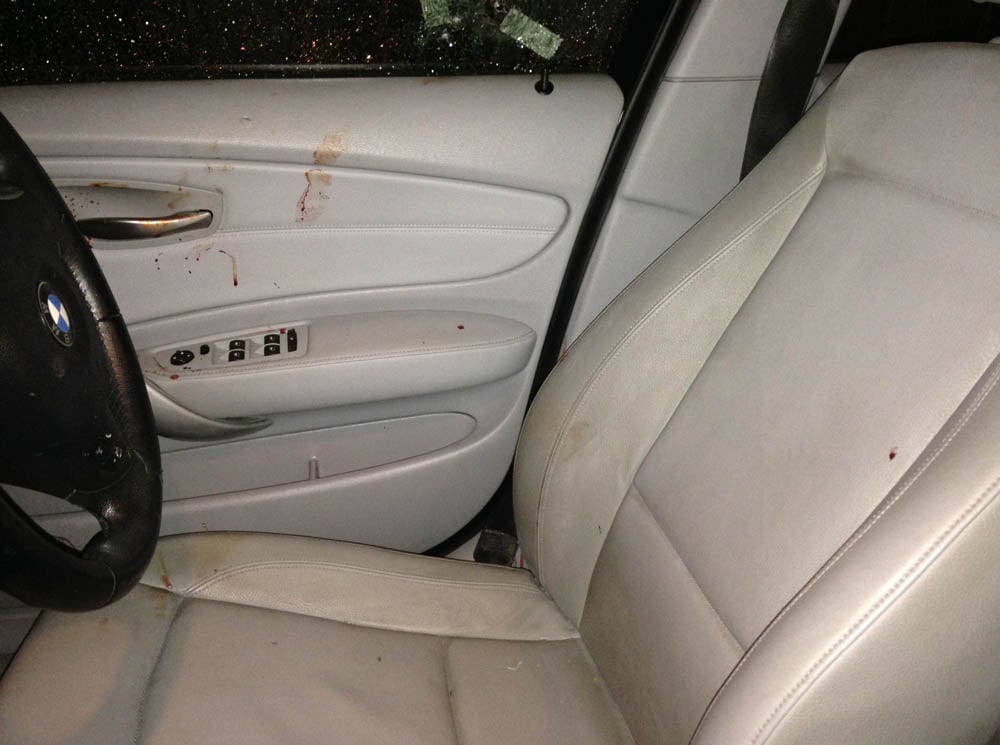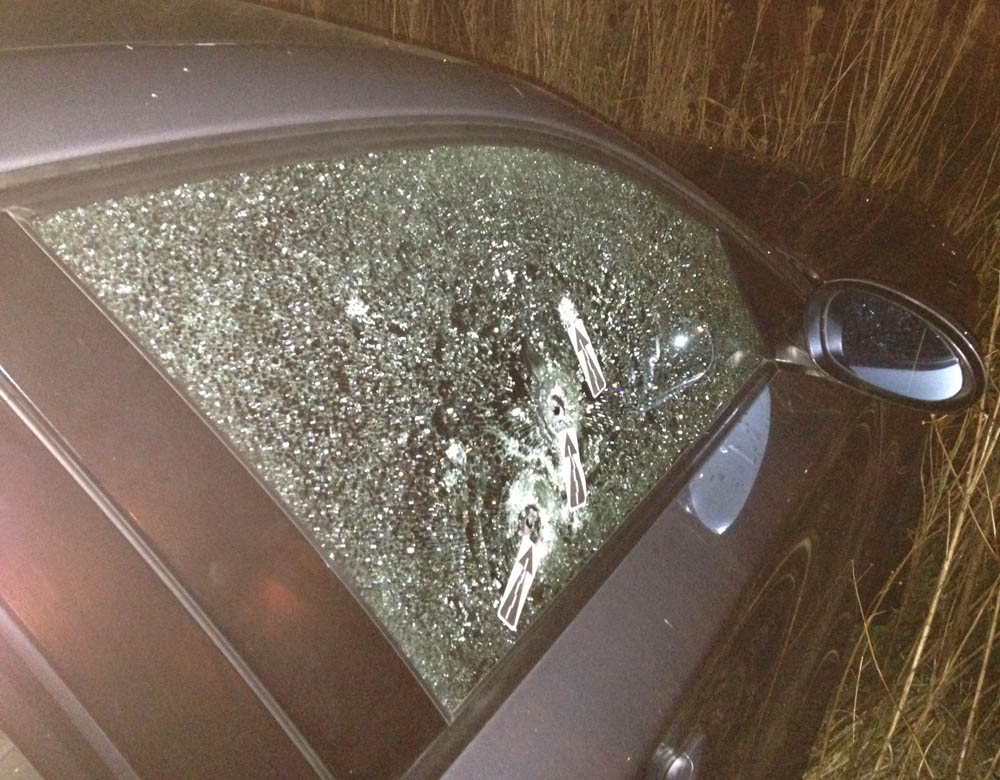In the wake of the death of Andries Tatane at the hands of the police in 2011, a group of non-governmental organisations got together to try to develop a use of force policy for the police. The intention was to draw the somewhat fragmented policies, with the laws that underpin them, into a clear set of guidelines on the use of force.
That workshop engaged a number of policing stakeholders, even reaching out to American police experts – who shared ways in which the Los Angeles Police Department had adapted its use of force policies in the wake of the Rodney King beating in 1991.
But while the police were initially fully engaged in the process, they later recanted. The effect is that while the law around the police and use of force is clear, there is no coherent policy around when, why and how police can use force – especially lethal force – when arresting suspects.
And so, according to policing experts, when rapper Khuli Chana was shot by the police in the early hours of Monday morning, the police officers (now charged with attempted murder) may themselves have been unclear on whether they were acting legally.

Khuli Chana's car after the shooting. (Supplied)
Experts also agree that firearm training differs across units of the police – sometimes even from station to station.
Some police officers are trained never to shoot at objects, vehicles or buildings; they must have a clear human target when shooting to minimise the risk of civilian injuries.
In the aftermath of the Chana shooting, Eric Bryer, the attorney of the kidnap suspect – who was mistaken for Chana – said: "My two clients, who were close friends of the kidnap victim, were actually standing in the road next to the policemen. They witnessed the police's attempt to get the driver to stop, but he defied their instructions. Then they fired into the air and after that, they actually shot at his tyres."
Entrenched culture
Other police officers have not used their firearms in years – independent researcher David Bruce estimated that, in certain years, about 90% of the force never use their weapons at all.
Gareth Newham, head of the governance, crime and justice division at the Institute for Security Studies (ISS) said some units or stations have an entrenched culture that equates bravery with gunfire.
In contrast, in Hillbrow in the late 1990s, Newham knew detectives – senior officers – who had not used their weapons in over 10 years.
Calls for more coherent use of force policies have grown stronger in recent years and Chana's experience was not an anomaly.
In the 2012/13 financial year, policing watchdog the Independent Police Investigative Directorate (IPID) investigated 156 cases of people who were killed during an arrest. It was also asked to investigate 539 cases of attempted murder, brought against police officers.
According to Bruce, the police's response has been to bolster the IPID and enforce the laws governing policing. But this is not enough.
In August 2012, Parliament passed amendments to section 49 of the Criminal Procedure Act that deal with the use of deadly force by police during an arrest.
This followed a ruling by the Constitutional Court that the relevant sections were too broad and needed to be brought in line with the Constitution, in particular, the right to life.
Legal clarity to the police
The amendments were supposed to provide legal clarity to the police, who, for years, had little real certainty on when and how they could use force in an arrest situation.
The Bill now says force must be reasonable and proportional. Deadly force may only be used if the suspect poses a serious threat to the police officer or other people, or if the police have grounds to believe that the suspect committed a serious violent crime and that there is no possibility of arresting him at a later stage.
The South African Police Service Act also emphasises that the use of force must be minimal, reasonable and a last resort.
So when the police shot at the vehicle that Chana was driving, they would have had to believe that the suspect was guilty of a serious crime (kidnapping) and that there was no possibility of arresting him at a later stage.

Khuli Chana's car after the shooting. (Supplied)
"Ideally, the default situation is to use minimal and reasonable force. Police are there to protect life and property. Ideally they should only use force as a very last resort and primarily when they think their lives are in danger. You don't know that the person you're chasing is a dangerous criminal," Newham said.
He added that the use of force is traumatic for the police, too, and that many are not prepared for gun battles with suspects. A review process should take into account the circumstances in which police fire their weapons, including their working hours and understanding of the policy framework.
Absence of 'administrative reviews'
But Newham said the Criminal Procedure Act amendments have actually not narrowed down the relevant provisions sufficiently.
In addition, it remains unclear if these amendments have actually formed part of police training in the absence of "administrative reviews": internal procedures used all over the world but not in South Africa, which test how police understand the terms under which they can fire a weapon.
Currently, investigations into policing and gunfire are punitively orientated, he said. In other words, it is only once a police officer is charged with something like attempted murder that he or she receives any retrospective engagement on the use of force.
"Police should ideally receive training on the use of their weapons twice a year," Newham said. But this is not enough, and it is a "mistake" not to assess the use of force in a more "nuanced" way.
This nuance is lacking from policing, generally.
"There have been big decisions to restructure the police, recruit more members, shut down units, which don't allow you to get into the nuances of protecting your officers.
"Accidents are an unavoidable part of policing but we want to minimise that risk as much as possible."
Rhetoric around use of force
Bruce said a "policy backlog" also robs the police of the ability to innovate. The white paper on police was an example of an "incredibly protracted" process, he said.
Likewise, the development of a use of force policy had been subjected to gatekeeping by the police's legal team, and an over-reliance on legalese that was of little assistance to police officers making split-second, life-changing decisions on the ground.
Political rhetoric around use of force exacerbated the problem, both experts agreed. The rhetoric was toned down, especially after Marikana, but this still did not translate into policy.
In its submission to the Farlam commission of inquiry, the Council for the Advancement of the South African Constitution (Casac) asked the commission to investigate whether statements made by political leaders may have fuelled brutality in policing.
According to Casac, from approximately January 2011, a policy of encouraging greater use of force was advanced by political leaders.
"It is argued that government initially pursued this policy in the belief that it would provide a solution to the problem of [violent] crime. However, since January 2011, the policy also involved the application of greater levels of force, including lethal force, to address the phenomenon of large numbers of service delivery and labour protests.
"The concept of maximum force should have no place whatsoever in the policing of democratic societies. It is rather uniformly accepted that the principle that should govern the use of force by police is the principle of minimum force," said Casac executive secretary Lawson Naidoo.
The Farlam commission is expected to make findings on the police's use of force, especially in crowd-control situations. But the development of a broader use of force policy remains on hold.